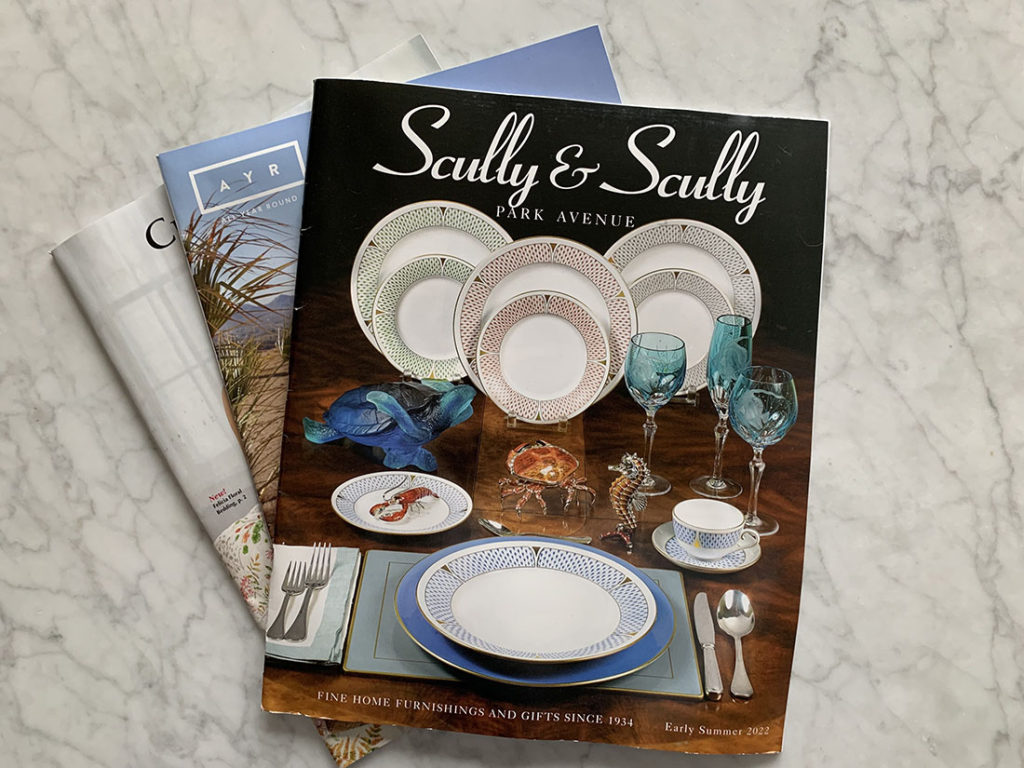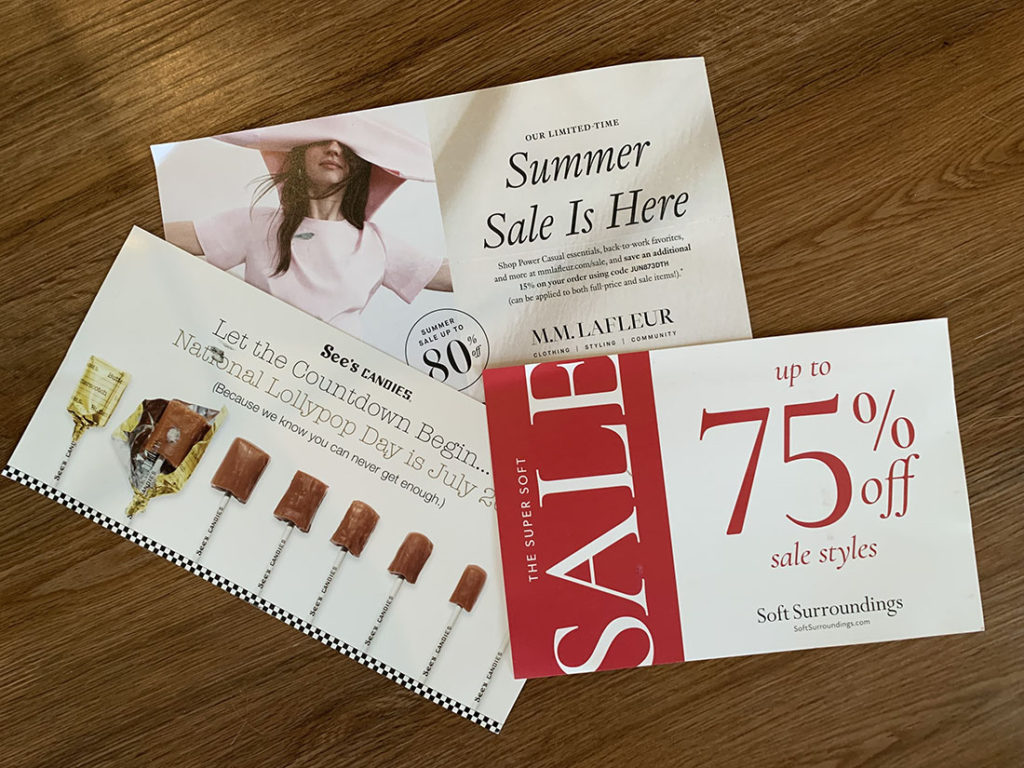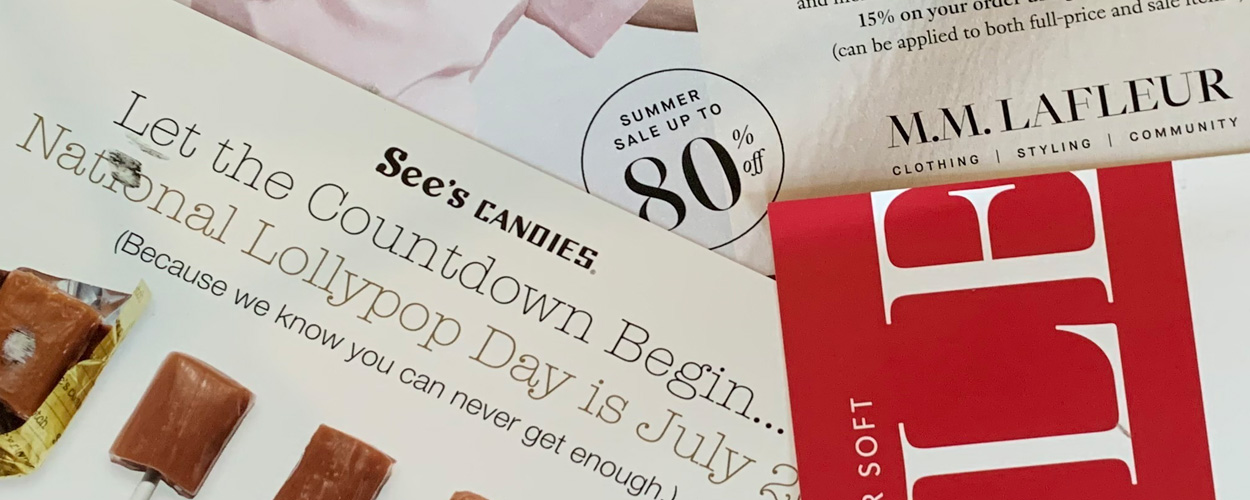Disruptive Catalogs: Part 6

If you’ve been following J.Schmid’s blog posts recently, you’ve already enjoyed reading about the many ways to make your catalog stand out, from show-stopping covers to using devices that invite interaction. But what about rethinking the very construct of your catalog? What about developing a mix-it-up strategy? We know the traditional catalog format serves many purposes: it provides the real estate to express your brand and convey the breadth of your product selection. But the other truth is that you can also stand out in the mailbox, capture attention, and achieve multiple objectives by changing up your format every now and then. Here are five ways to think outside the catalog “box,” as it were.
Push the Catalog Boundaries
For a small format departure with big impact, think about an oversized catalog. Significantly increasing page count or expanding your trim size makes a dramatic statement in the mailbox. Quite literally, the very bulk or ‘heft,’ in and of itself, demands attention. These larger books serve beautifully in doing everything your traditional catalog does, there’s just a lot more of it. And they can really make a statement at the start of a new season, as holiday book or for any time your mail strategy needs an anchor to your marketing mix. Your costs will go up, but you’re also sending a piece your customers simply cannot ignore. For instance, who doesn’t notice the Restoration Hardware tome that lands with a thud on the front doorstep at the start of every season? You can’t unhear that. Browse through it or don’t; buy something or (more likely) don’t; or just use it as a piece of furniture. Regardless, you have to do something with it. For better or worse, that is impact.

Add Bells and Whistles
(No, not literally.)
Pulling a page from J.Schmid colleague Devon Clements’ playbook, adding physical devices to your traditional catalog invites engagement and requires touch and action to navigate around your book. Some popular examples are blow-ins, gatefolds, cover wraps, bind-ins or bellybands. These pieces introduce additional visual and tactical experiences to the book, but also serve as extremely effective real estate to convey promotion, urgency, announcements, additional brand expression or a personalized message to your customers.
Prove That Less Is More
Still in the catalog family, but more diminutive in trim size (approx. 6”x11”) is the Slim Jim. The big news here is the postage savings: you can still mail this multipage format, but if it’s tabbed and under 3oz, it mails letter rate. The disclaimer is that these typically don’t perform as well as traditional-sized catalog. But if used sparingly and wisely, they can be a terrific format for specific uses, such as to drive clearance sales, introduce a new product line, highlight seasonal products or reach win back lapsed customers with an offer message.

Change the Rules
Another way to stir the pot is to take a catalog vacation by considering a direct mail format. There are hundreds of shapes, sizes, configurations and folds available within the direct mail space that can really add interest. Bi-folds, tri-folds, barrel folds, iron cross… to name just a few. Take your pick and use them to announce a new product line, articulate a single product that might be complex, an extensive promotion or the like. These can run the gamut from a cost standpoint, and can really level up with a nice paper stock, complex folds or dye cuts.
Make It Quick
Nothing beats a bold, oversized postcard to communicate urgency, announcements, openings and promotions. Think of a postcard as the equivalent of an elevator pitch. It’s the one-second opportunity to sell a single product, or convey a single call to action to customers that are familiar and loyal to your brand. They do not replace a catalog, but they are a proven sidekick to catalogs or as part of larger campaigns. They are cost-efficient, and they are effective.

All this being said, repetition and frequency of direct mail formats does have a place in marketing. Think of the oversized coupon postcard that Bed, Bath & Beyond used to send so frequently. Not only was it instantly recognizable, it became expected. And an anchor to your mix, traditional catalogs are still marketing’s champagne. But there are wonderful benefits from mixing it up now and then. So, as you think about your contact strategy, consider what you want achieve. It could be that inserting one of these unexpected, alternative formats could spice up the mailbox, delight your customers and even drive them to action.
Tags: catalog format, direct mail format, direct mail formats, Michele Drohan
